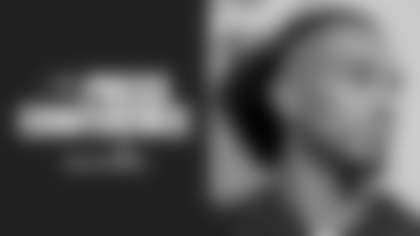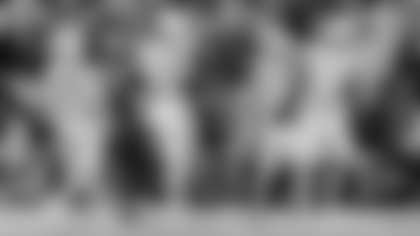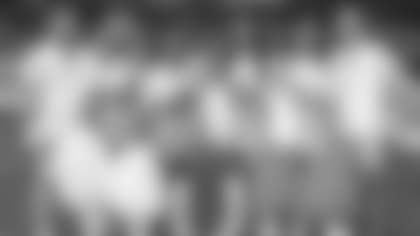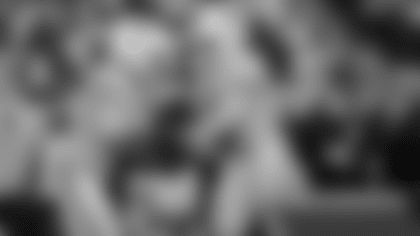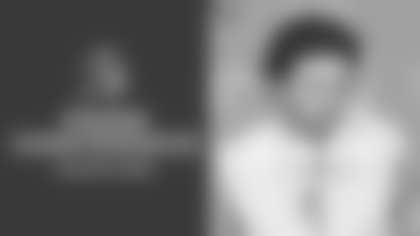Michael Pittman is an example of the type of top running back talent that is often still available in the second and third rounds
In the weeks prior to the 2003 NFL Draft, Buccaneers.com will analyze each position on the team in regards to the draft, looking at depth, selection history and available players. Much of the focus will be on the Bucs' second and third-round history, as the team does not currently own a first-round pick. As usual, this look at the draft is not intended to reflect the intentions or strategies of the Buccaneers' personnel decision-makers. Today we focus on the running back position, where the Bucs haven't used a first-day draft pick since 1997.
Michael Pittman gained 124 rushing yards in Super Bowl XXXVII and was on the short list of candidates for the game's MVP award. Mike Alstott scored a touchdown in that 48-21 rout of the Oakland Raiders and caught five passes for 43 yards. Darian Barnes provided crushing blocks for Pittman and made two special teams tackles. Aaron Stecker averaged 22.3 yards on three kickoff returns.
The Tampa Bay Buccaneers appeared to be well-stocked with an intriguing variety of talents at the running back position, as evidenced by that Super Bowl performance, yet the team finished 27th in rushing during the 2002 regular season. Apparently, the Buccaneers believe some of that issue lies in the offensive line, as they have already released one starter from that group (Jeff Christy) and signed two more (Jason Whittle and John Wade). Still, it certainly makes one wonder if the Bucs will choose to address the running back position in the 2003 NFL Draft.
Tampa Bay hasn't allocated many draft resources to their running back stable since 1997. The team has selected just two running backs and two fullbacks in the last five years, and none of those were taken on the first day, when the top three rounds are conducted. In part, that's because the '96 and 97 drafts yielded Alstott and RB Warrick Dunn, who gave the Bucs a Pro Bowl-caliber tandem for years, and in part that's because the team used free agency instead to grab Pittman last spring.
| **Running Backs Drafted in the Last Five Years** | ||||
| **Year** | **Round** | **Player** | **School** | **Still on Team?** |
| 2002 | 4th | Travis Stephens | Tennessee | No |
| 2001 | 6th | Jameel Cook (FB) | Illinois | Yes |
| 1999 | 6th | Lamarr Glenn (FB) | Florida State | No |
| 1999 | 7th | Autry Denson | Notre Dame | No |
The last tailback grabbed by the Bucs on the first day was Dunn, at number 12 overall in 1997. Barring an extremely unlikely trade up, the Bucs will not use a first-round pick on a running back in 2003, since they don't own one. However, that doesn't have to be particularly discouraging if Tampa Bay is looking for a back who can contribute quickly; the second and third rounds have yielded many top-notch runners over the years, including several in Tampa.
One needs look back just a year to find a prime example. Denver selected Clinton Portis midway through the second round last year, and the former Miami Hurricane had an enormous year, racking up 1,508 rushing yards and 15 touchdowns. Players as talented as Portis may not come along every year, but the second and third rounds do seem to yield productive backs on an almost annual basis. Try Travis Henry at pick 58 and Kevan Barlow at pick 80 in 2001; Amos Zereoue at pick 95 in 1999; Ahman Green at pick 76 and Pittman at pick 95 in 1998; Corey Dillon at pick 43 and Duce Staley at pick 71 in 1997…you get the idea. The Bucs head into this draft with picks number 64 and 97 in the second and third rounds.
In fact, the Bucs have only to look at their own media guide to see the value of second-round backs. Dunn certainly displayed the electrifying talent that made him a high first-rounder, and he ranks third on the team's all-time rushing chart, but the top two backs on that list, James Wilder and Alstott, were second-rounders, as were three of the top four and five of the top nine.
It's reasonably to say that, from 1988 to 1996, the Bucs hit on four straight second-round running backs – Lars Tate, Reggie Cobb, Errict Rhett and Alstott – constantly giving fresh reinforcements to a position that often has a short shelf life.
Running Backs Drafted by Tampa Bay in the Second and Third Rounds








